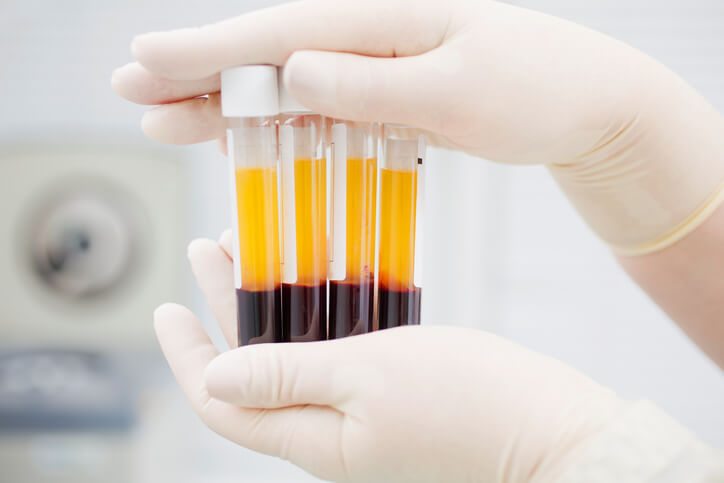HARD SCIENCE BEHIND PRP CRAZE? (Orthopedics This Week)
A team of researchers from Pittsburgh, Pennsylvania, wanted to see what hard science may exist behind the platelet rich plasma (PRP) craze.
Their work, “Effect of Platelet-Rich Plasma on Chondrogenic Differentiation of Adipose- and Bone Marrow-Derived Mesenchymal Stem Cells,” appears in the July 23, 2018 edition of Tissue Engineering Part A.
Rocky Tuan, Ph.D., Distinguished Professor and director of the Center for Cellular and Molecular Engineering at the University of Pittsburgh, explained to OTW, “In recent years, there have been many highly publicized instances where injured athletes receiving autologous PRP returned rapidly to game-winning form, causing an exponential rise in the use of biologics to treat orthopedic problems.”
“Among these, the use of PRP is considered a ‘minimally manipulated’ autologous therapy, marketed through the Public Health Service Act Section 361 pathway, which does not require pre-market approval/clearance from the FDA.”
“Clinical use of these biologics has greatly outpaced evidence-based research. This work is our effort in gaining scientific insight into the possible biological activity of PRP, specifically in the context of inducing new cartilage formation, a key objective in the treatment of degenerative joint diseases, such as osteoarthritis.”
“As current PRP treatments of joint diseases via injections into the joint space are somewhat arbitrary in terms of dose and frequency, we designed experiments to examine the effect of varying both concentration and duration of PRP treatment.”
“As the biological target is new cartilage formation, for the purpose of repairing damaged or diseased cartilage, we have chosen as our experiment system cultured adult mesenchymal stem cells (MSCs) undergoing cartilage formation, as these cells are generally thought to be responsible for tissue regeneration in the adult. In addition, because the cartilage formation process of MSCs is well characterized, there are distinct markers with which to evaluate the effect(s) of PRP.”
The authors wrote, “PRP rreleasewas prepared according to an adapted protocol…Human IFP-ASCs were isolated from IFPs [infrapatellar fat pad] of three different donors undergoing total knee arthroplasty (48-year-old female, 59-year-old male, and 65-year-old male)….”
Dr. Tuan told OTW, “Our findings clearly demonstrate that high concentrations (similar to those commonly used clinically) and long duration of PRP treatment overtly suppress new cartilage formation, although low concentration and transient treatment is somewhat stimulatory. The results are the same for both MSCs derived from the bone marrow as well as those from adipose tissue, the two most common forms of MSCs being investigated for potential tissue regeneration applications.”
“Although platelets are the body’s natural healing machine, in that they are attracted to injured tissue sites where they release their rich content of abundant growth factors and cytokines, the resultant biological activities are complex, consisting of both anabolic and catabolic activities.”
“It should be noted that the articular joint space is normally not vascularized and therefore the presence of platelet as well as plasma is not a natural phenomenon. Introducing PRP into the joint space thus represents an ‘unnatural’ way of using nature’s healing machine, and caution must be exercised.”
“While PRP does contain growth factors that can enhance cartilage growth, it also harbors factors that stimulate multiple other cellular activities, such as vascularization, cell adhesion, cell migration, cell death, etc., which may be incompatible or even inhibitory to cartilage formation.”
“Careful consideration of the nature of the PRP preparation, which is known to vary greatly between collections, as well as dose and time and frequency of treatment, must be exercised in applying it as a biologic therapy for degenerative joint diseases, such as osteoarthritis.”
